by Vicki Nemeth
Amish storage furniture has so many door styles, you may not know how to talk about what styles you’re looking for.
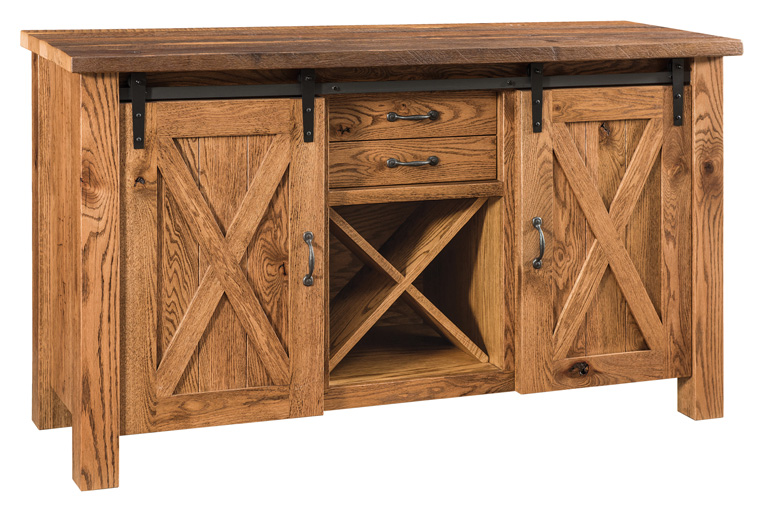
Wood furniture has been around almost as long as people have, and Amish people have been around for over 300 years. With that much history, generations of Amish woodworkers were sure to create variations and refinement until the sheer variety became overwhelming to anyone who was not an expert.
Luckily, there are some basic traits of all furniture doors that make it possible to decode what you’re looking at. If you start on the outside and work your way in, you can see what door type, and then what panel style you’re looking at. Let’s start with regular swinging doors.
How is the door set on the furniture? Overset or inset door?
Overset or raised doors sit over the storage compartment, maximizing your space inside, and creating a louder more decadent style. Overset doors emphasize light and texture.

Inset or flush doors sit just inside the opening of the storage compartment, making its style look understated and classic. Flush doors emphasize the geometric outline of the door on the face of the furniture.

What’s the difference between a raised and reverse panel?
Okay, now we get trickier. The door mounting style is the category we just covered, and the next category is panel type. There are four types of furniture door panels:
Raised panels
Raised door panels fit inside the frame pieces like a puzzle, but quickly curve out to protrude from the middle of the door so the most outward part of the panel is flush with the frame.
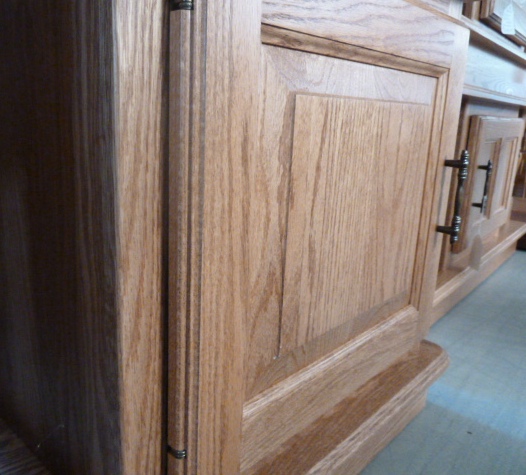
This angled view shows how the center of the door panel is raised compared to the hidden edges which are carved to fit into the frame. The frame also complements the panel’s shape with some carving of its own.

Raised panels have their own way of reflecting the light. They add texture and dimension to your room and are popular with traditional looks.

Reverse panels

Reverse or inset panels sit inside the door’s frame, making the frame appear strong and elegant. They are classic and modern without being overly minimalistic. In terms of showiness, reverse panels fall between flat and raised panel doors.

Flat or no panels
Flat doors are plain and elegant. With no visible panels overshadowing them, the shapes of the doors themselves become the furniture’s primary style feature. When flat doors are inset, the rectangles of the doors’ outlines stand out and make a statement. When flat doors are overset, they don’t show as many lines around them and are their most minimalistic.

Flat doors are more popular in modern furniture with artificial materials. In handcrafted furniture, flat construction is more common on drawers than on doors, because drawers tend to have smaller faces that are less likely to become warped during seasonal changes.
Plank panels
Some doors are simply made of full length planks fitted together.

Panel style features
Once you understand door setting and panel types, it’s time to go deeper with style features! There are nearly unlimited shapes that workshops use to make door panels and frames. Below are only the most popular; there are potentially hundreds not listed here.
Cathedral panels
Most popular in raised styles, the cathedral panel features a central arch with a flourish on each side. Cathedral panels’ curviness suit the luxurious look of traditional furniture.
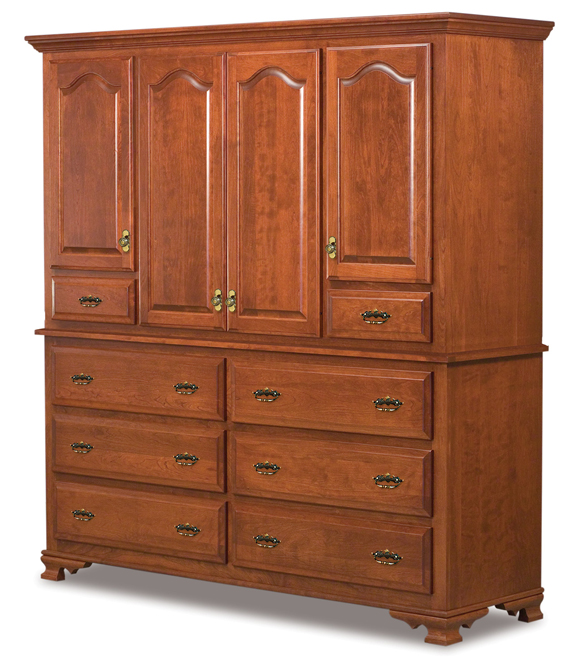
Arched panels
This one’s pretty straightforward: arched panels have an arch shape at the top. That is, an upward curve.
Half-arched panels
Arched panel doors are easy. But what about a single arch that stretches across two doors? Half-arched panels mirror each other with half an arch going each way. If you have end tables that come in pairs, you can even get them to mirror each other, creating a large arch pattern with your bed or sofa in the middle.
Shiplap recessed panels
Shiplap is a wood surface made of several vertical planks with visible recessed edges in between them to create stripes. They look both finished and casual.
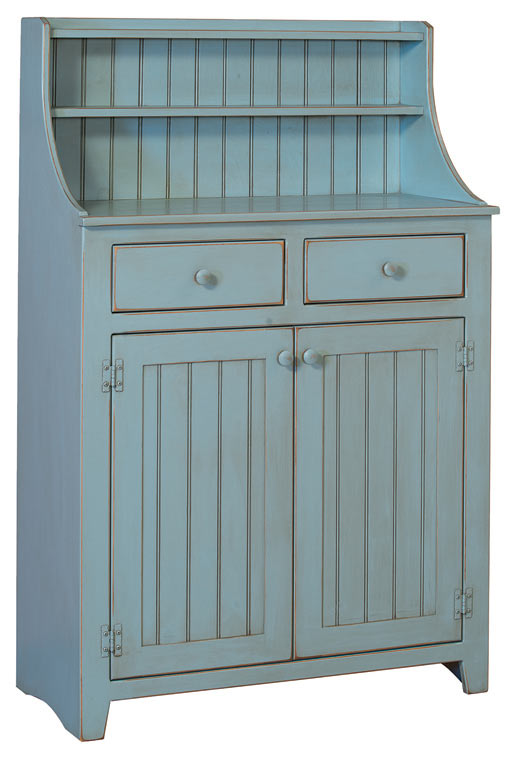
Metal inserts
Metal inserts are specialized. They turn kitchen furniture into breathable storage for your baking, such as in a pie safe.
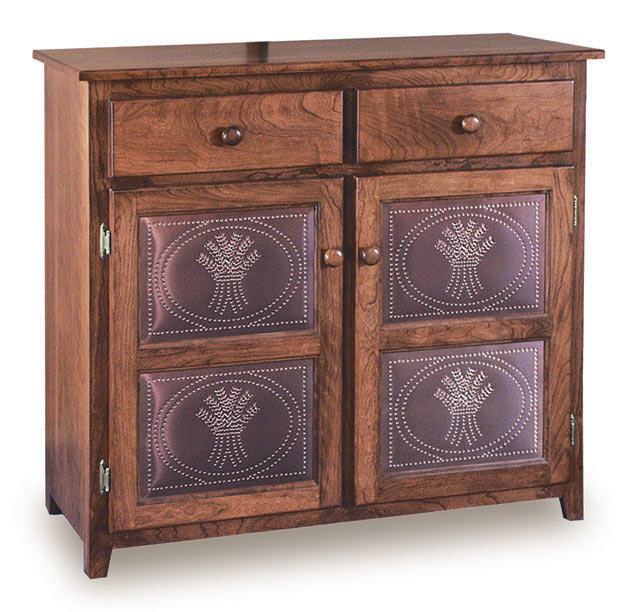

Mullions
While glass windows have mullions to stabilize them, reverse panels can have mullions to add interesting shapes and patterns, or even to match nearby glass.
Glass doors
Of course, you can skip paneling altogether if you’re looking for a glass door. Glass doors display your belongings while your furniture stores them. That’s why they’re popular in hutches and electronics centers, and even some bookcases. Glass also brightens a room by reflecting light.
The glass in doors is usually inset, similar to a reverse panel, and comes in a variety of shapes, colors and textures:
Mullions
Mullions are pieces of wood or metal which sit across the window from one side of the frame to the other, and reinforce it while adding more style. Some mullions create art shapes and hold multiple pieces of glass together, such as in stained glass windows.
Stained glass
Stained glass adds color and vintage style to a piece of furniture. Vintage-style cabinets and barrister bookcases may use stained glass to imply seriousness and value within.
Plain glass
Don’t let the “plain” in “plain glass” fool you. Plain glass is functional. It offers the best visibility for the items stored inside, and emphasizes the style features of the wood framing around the glass.
Baroque glass
Swirly and wavy, baroque glass simulates an old method of glass making, in which slightly different batches of glass are just mixed together so they adhere, but their different colors or densities stand out and make waves.


Straw glass
Straw glass looks as though someone had dropped pieces of straw all over it while it was soft, to create the appearance of short lines scattered all over.
Water glass
Water glass has fluctuating thickness throughout, so it looks as though light is shining on it as it would through a naturally moving water surface.
Seedy glass
Seedy glass is full of bubbles, as though someone had scattered seeds over it while it was still soft.
Smoked glass
Smoked glass is as modern and smooth as plain glass, but a blackish tint keeps it dark and conceals many of your items inside. It’s popular in TV stands as it lets the lights of your electronics show through while the casings don’t.

Beveled glass
Thick glass may have edges that taper toward the frame, reflecting light in different directions. Sometimes beveled edges help glass match the shape of raised wood door panels elsewhere on the same furniture. Beveled glass creates a luxurious appearance and may even have a prism effect of refracting rainbows in the room.

Frame construction
The frame that makes up the edges of the door and holds the panels can also come in a variety of styles.
Regular frame
A furniture door frame usually consists of two vertical pieces running the full length of the left and right sides, with two horizontal top and bottom pieces in between. The panel goes in the middle of these four pieces.
Mitered frame
A frame has mitered corners when each piece joins the next one at an angle. Instead of fitting the horizontal pieces inside the vertical pieces of a door frame, mitered joints give each piece an equal role in holding the door together. Mitered doors make a piece of furniture look dapper and held together.

Molding
A furniture door frame can be more than just boards around a panel. Craftsmen may carve those boards in a variety of textures. Some frames are rounded, while others have grooves progressing toward the panel. Textured door frames can add rich detail to wood furniture.
Unusual door mounting types
Swinging doors are the most common wood furniture door mounting styles, but here are some other door types.
Sliding Doors
Sliding doors are most popular in electronics centers such as TV stands. Rarely protruding from the furniture makes sliding doors functional in specialized ways. First, since they are often close to the floor, they don’t risk tripping you as you walk by. Second, you can leave them open without using up extra space, to help your electronics vent and to keep buttons accessible. They are less likely to fall closed when you don’t want them to.
Most sliding doors need to fit in their tracks and pass each other by, so they will usually come in smooth elegant styles with limited texture and either a very small or no handle. But there are still thousands of style possibilities.
Tilt-out doors
Tilt-out doors are for convenient functional storage, like in a kitchen, office, or hobby room. They’re made for the contents of your furniture to slide out with a single arm motion of opening the door.

Tilt-up sliding doors
To protect valuable legal archives from dust, barrister bookcases have a glass door for each shelf which tilts out and up, and slides back into the shelf on treads. You’ll be able to spot a tilt-up door by the handles on the bottom.
Roll top doors
Roll top doors aren’t only for the bread box. They’re useful on any piece of furniture that can benefit from a flexible door that hides away when open. On desks with high side panels for privacy such as secretary desks, roll top doors follow the shape of the panels and use up no extra space.

Bi-fold doors
These doors are two doors in one that fold together while sliding on treads, just like closet doors. This helps them swing out of the front less.

Pocket doors
Popular in combination with bi-fold doors, pocket doors slide back into the furniture to stow away when open.
Why do doors have panels?
Wood furniture doors have panels because wood is porus, having previously been alive. Because it breathes and absorbs moisture, wood changes shape with the weather. Sometimes the change is too subtle to see, but sometimes it is severe enough to warp or crack large, flat pieces.
Constructing a door out of smaller pieces allows them room to slide subtly in and out of each other, so the door can retain its overall shape.
What’s the most important thing you’ve learned about Amish furniture door panels today? Let us know in the comments below.





This was a very interesting and informative article.
Thanks, Laura!